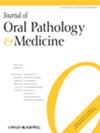Daughter Cells Budding From PGCCs and Their Clinicopathological Significances in Oral Squamous Cell Carcinoma
Abstract
Objective
Polyploid giant cancer cells (PGCCs) have emerged as a focal point in tumorigenesis and progression research. Present across various tumor tissues, PGCCs are considered a potential target for anti-tumor strategies. Nonetheless, their presence and role in oral squamous cell carcinoma (OSCC) remain undocumented. This study investigated the presence and count of PGCCs in OSCC tissues, evaluated their association with clinicopathological factors, and preliminarily examined the mechanisms underlying their formation alongside their influence on OSCC proliferation, drug resistance, and migratory capacity.
Methods
The correlation between PGCC counts and clinical outcomes in OSCC was evaluated. CoCl2 treatment was used to induce PGCC formation in OSCCUM1 cells, and alterations in HIF-1α, SOX-2, E-cadherin, and N-cadherin expression, along with changes in cellular proliferation, drug resistance, and migratory capacity, were assessed.
Results
Among 76 OSCC patients, PGCC counts were linked to clinical stage, histological grade, and chemotherapy response. Patients with > 3 PGCCs/HP exhibited significantly poorer overall and disease-free survival compared to those with ≤ 3 PGCCs/HP. Following the induction of polyploid giant cancer cells with budding cells, miRNA analysis revealed upregulated SOX-2 expression, while Western blot demonstrated increased protein levels of HIF-1α, SOX-2, and N-cadherin, accompanied by reduced E-cadherin expression. Induced PGCCs with budding cells also exhibited enhanced proliferation, resistance to chemotherapy, and migratory capacity.
Conclusion
Hypoxic conditions may promote OSCC proliferation, chemoresistance, and migration through the formation of PGCCs with budding cells characterized by epithelial-mesenchymal transition and stemness phenotypes.

 求助内容:
求助内容: 应助结果提醒方式:
应助结果提醒方式:


